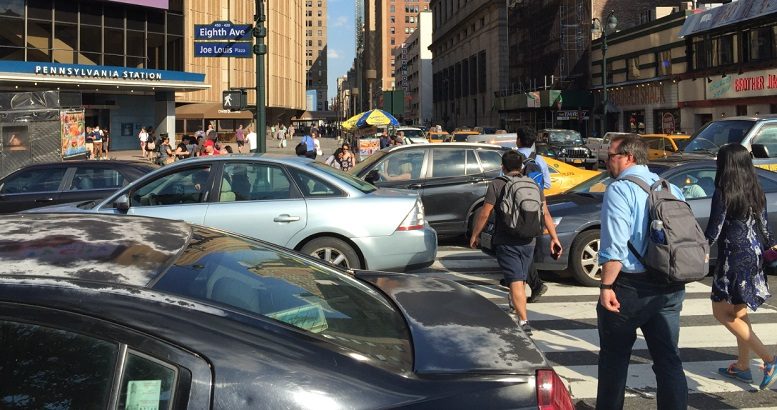

Author: William Fain (Princeton Architectural Press, 2012)
William Fain is an urban designer. These are the first words in the Foreword of If Cars Could Talk. It is no trivial piece of information, for it sets the context for the essays that follow, each of which explore the urban condition in and around Los Angeles—the city out of which Fain has been running a design firm for many years.
Los Angeles is known for being one of the worlds smoggiest, most congested and car choked cities in North America. If Cars Could Talk speaks to this issue, but to be clear, it is not simply a doom-and-gloom book. Instead, it dives into the relationships between transportation infrastructure, how it influences architecture (and vice versa) and the impact that has on the way people use the city. Drawing on his extensive experience—which spans the world and has won him many awards—Fain propels the conversation about Los Angeles forward with an objective lens and in an accessible way for all to enjoy.
It is no secret that Los Angeles is a town of highways with a unique mix of ethnicities housed in different neighbourhoods that are scattered through out the region seemingly at random. Fain begins by describing a history of the city and how it grew up around the concept of the “Good life city” as well as its relaxed ‘endless summer’ mentality, which penetrates all the way up into its corporate culture. Although Los Angeles is a manifestation of the same suburbanization that hit many North American cities its notoriety for smog, congestion and fragmentation transcends virtually every other city in the continent, a fact that Fain jokes is the reason why it has become the subject of so many disaster movies in which the city is completely destroyed.

Though L.A. has some of the worst sprawl, however, it is by no means soulless. Fain does well in describing how the city has retained an amazing arts and culture community that makes it a destination for all kinds of artists from all over the world. It is home to excellent architecture, galleries, theatres and world-class universities. Fain does not let you forget this fact throughout the book, constantly displaying many excellent paintings inspired by the Los Angeles landscape and lifestyle. Unlike other books of this type, the arts play a heavy roll in the discussion of urbanism, helping to convey what it means to actual people who live in the city and how they interpret the landscape.
Fain does balance his optimism about Los Angeles, though. In line with its reputation as being fragmented, he illustrates how much of the excellent architecture in L.A. is presented as stand-alone pieces with no interstitial fabric that weaves the city together. Fain highlights that this is the result of the car culture and the conspicuous consumption that has followed on the heels of its arts and Hollywood scene. Los Angeles embraced the car and prided itself around the freedom of movement and convenience it provided, blurring the line between city and country. As cars use increased, streets widened, its many neighbourhoods became disconnected and the city started losing its cohesion, becoming what we see today, everybody worrying about the security of their cars with the www.azcarkeys.com services but forgetting about their own security at home.
As the effects of increased fuel prices and patterns of conspicuous consumption have become more apparent, however, people’s attitudes are changing. Slowly, Fain comments, citizens are organizing themselves and better planning decisions are being made. Architecture too is seeing a shift in the mindset of its practitioners. People are now seeing the importance of designing buildings to fit in with their surroundings and provide usable public spaces that blur the line between private and public property. The attitude that public spaces and amenities are valuable is creeping its way into the mainstream consciousness—a solid first step in mending and strengthening the urban fabric.
Ultimately, the complex relationship between driving, architecture, culture and consumption has resulted in the nuanced settlement pattern of Los Angeles. Accordingly, William Fain does paint L.A. as a mess of highways and smog, but also describes how he is also proud and hopeful for his city. A certain pride comes across declaring “yes, L.A. is a mess, but it is OUR mess and we love it”.

That being said, given the many similarities between Los Angeles and cities founded on the same values, If Cars Could Talk could be described as a deep breath in the face of the problems resulting from the consumptive habits of western culture, as a whole. It acknowledges the shortcomings of such habits, but explains them without assigning blame and re-assures that progress is being made. This is enough to give us all hope because, if it can happen in the City of Angels, we can be sure that it can happen virtually anywhere else…..something that is undoubtedly an exciting part of the future.
***
Andrew Cuthbert works as a GIS Analyst working in resource extraction. Seeing those industries as the basis from which almost every other industry stands spurred his interest in design and urban sustainability and planning which led to his involvment with Spacing Magazine and his continuing education. When not working Andrew can most likely be found on his bike taking in the sights and fresh air.

